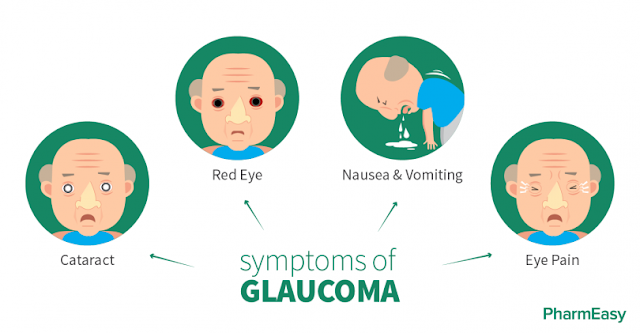Glaucoma Wiki - Everthing About Glaucoma Disease
 |
| Glaucoma |
Over 300,000 Australians have glaucoma. While it is more common as people age, it can occur at any age. As our population becomes older, the proportion of glaucoma patients is increasing.
Glaucoma Causes & Symptoms
Chronic (primary open-angle) glaucoma is the most common type. It has no symptoms until eye sight is lost at a later stage.Damage progresses very slowly and destroys vision gradually, starting with the side vision. One eye covers for the other, and the person remains unaware of any problem until a majority of nerve fibres have been destroyed, and a large part of vision has been destroyed. This damage is irreversible. It is progressive and usually relentless. Treatment cannot recover what has been lost. But it can arrest, or at least slow down, the damage process. That is why it is so important to detect the problem as early as possible, to be able to start treatment with as little damage to the vision as possible.
- normal vision
- mild to moderate loss
- severe visual loss
Glaucoma Risks
Although anyone can get glaucoma, some people have a higher risk, i.e. those with:- a family history of glaucoma;
- diabetes;
- migraine;
- short sightedness (myopia);
- long sightedness (hyperopia);
- eye injuries;
- high blood pressure; or
- past or present use of cortisone drugs (steroids).
People in these groups should have their first eye check no later than the age of 35. For most people, it is recommended to have an eye check for glaucoma by the age of 40.
Glaucoma Types
Chronic (primary open-angle) glaucoma
This is the most common form of this disease. However, other forms occur.Low-tension or normal tension glaucoma
Occasionally optic nerve damage can occur in people with so-called normal eye pressure. This form of glaucoma is treated in the same manner as open-angle glaucoma.Acute (angle-closure) glaucoma
Acute glaucoma is when the pressure inside the eye rapidly increases due to the iris blocking the drain. An attack of acute glaucoma is often severe. People suffer pain, nausea, blurred vision and redness of the eye. Immediate medical help should be sought. If treatment is delayed there can be permanent visual damage in a very short time. Usually, laser surgery performed promptly can clear the blockage and protect against visual impairment.
 |
| severe visual loss |
 |
| normal vision |
 |
| Mild to moderate loss |
Congenital glaucoma
This is a rare form of glaucoma caused by an abnormal drainage system. It can exist at birth or develop later. Parents may note that the child is sensitive to light, has enlarged and cloudy eyes, and excessive watering. Surgery is usually needed.
Secondary glaucomas
These glaucomas can develop as a result of other disorders of the eye such as injuries, cataracts, or eye inflammation. The use of steroids (cortisone) has a tendency to raise eye pressure and therefore pressures should be checked frequently when steroids are used.
How is glaucoma detected?
Regular eye examinations are the best way to detect glaucoma early.
A glaucoma test usually includes the following:
- optic nerve check with an ophthalmoscope;
- eye pressure check (tonometry);
- visual field assessment if needed — this tests the sensitivity of the side vision, where glaucoma strikes first.
Can glaucoma be treated?
Although there is no cure for glaucoma it can usually be controlled and further loss of sight either prevented or at least slowed down.
Glaucoma Treatments
Glaucoma Eyedrops - these are the most common form of treatment and must be used regularly. In some cases pills are prescribed. The drops can be varied to best suit the patient and the type of glaucoma.
Laser (laser trabeculoplasty) - this is performed when eyedrops do not stop deterioration in the field of vision. In many cases eyedrops will need to be continued after laser. Laser does not require a hospital stay.
Glaucoma Surgery (trabeculectomy) - this is performed usually after eyedrops and laser have failed to control the eye pressure. A new channel for the fluid to leave the eye is created.
Treatment can save remaining vision but it does not improve eye sight.










